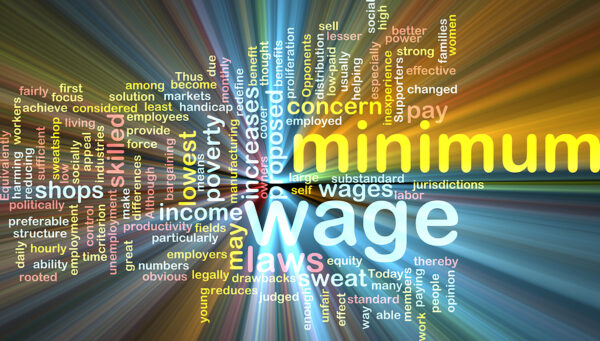
Should You Care About the Minimum Wage Increase
Should you take any action in response? Perhaps.
If you are a federal contractor or work on infrastructure projects at least partially funded by the U.S. Government and have employees currently earning less than $10.10 per hour, of course, the answer is yes.
That is, so long as the President’s action holds up to legal scrutiny. However, it may not. The authority to make this change belongs to the Secretary of Labor, not the President. Congress explicitly granted this power to the Labor Secretary under two statutes: the Davis-Bacon Act and the Service Contract Act, which have been on the books since 1931 and 1965, respectively.
You can read more about minimum wage law by visiting the Department of Labor website.
Department of Labor Sets Minimum Wages
Those laws require the Labor Secretary to set multiple minimum wages for those federally funded contract workers, taking into consideration overall local labor market conditions and variations in prevailing wages for the particular jobs involved. Regulatory machinery has long been in place to make those calculations.
It could take a long time for the judiciary to sort it out. Unless federal courts start imposing injunctions preventing the order to take effect, federal contractors will need to comply. If government contractors are a significant factor in your area, this move could put upward pressure on wages for similar jobs in your community.
State Taking Action on Minimum Wage
Meanwhile, twenty states, the District of Columbia and some municipalities already mandate minimum wages for all employers that are higher than the current $7.25 per hour rate. (There are exceptions for some employers.) Washington, for example, imposes a $9.32 hourly minimum. But last year, the state’s incorporated city of SeaTac voted to raise its minimum hourly rate to $15. Many of these states’ minimum wage laws call for automatic COLA-based minimum wage adjustments.
President Obama is also trying to use the “bully pulpit” of the presidency to prompt employers not affected by his executive order to raise their minimum wages out of a sense of “fairness.” In his recent State of the Union address, the President put the spotlight on a pizza restaurant owner who raised his own workers’ hourly wages to $10.10. “Tonight, I ask more of America’s business leaders to follow [his] lead… it’s good for the economy. It’s good for America,” the President asserted.
Fair Labor Standards Act of 1938
Back in 1938 President Franklin D. Roosevelt took a harsher tone when he asked Congress to enact (as it did) the Fair Labor Standards Act. “No business which depends for existence on paying less than living wages to its workers has any right to continue in this country,” he said.
What is a “Living Wage”
So what’s a living wage? MIT professor Amy Glasmeier’s studies the issue, on a county-by-county basis. She asserts that it varies between $12 and $55 per hour. If true, there should be no expectation that the minimum wage is a “living” wage.
Opponents of raising the minimum wage predict employers with a concentration of minimum wage jobs will be forced to lay off workers, or at least freeze hiring. People on the other side of the argument, including many economists, argue that higher minimum wages can help business by improving productivity and retention, for example, and that fears of mass layoffs are overblown.
The simplest, and perhaps most superficial, argument is that paying higher wages will put more money in workers’ hands, which they will promptly spend and stimulate the local economy. Henry Ford believed paying higher wages would force other business to do the same, making cars suddenly affordable to the average laborer’s family, expanding the demand for his products. It worked out that way for Ford, who also fiercely opposed labor unions.
Removing Money from Business Owners Wallets
The fact that raising wages will remove that higher payroll increment from the wallets of business owners is considered less consequential in the view of some economists, because they assume those not living on the margins can save and invest a higher proportion of their earnings. Of course, this assumption may still be a tough sell to those who are negatively impacted by the raise.
Another argument, more appealing to business owners, has been developed by University of Massachusetts economics professor Arindrajit Dube. He points out that the proportion of teenage minimum wage job holders is small and declining — from 26 percent in 1979 to 12 percent in 2011. This suggests a higher minimum wage would not be lost on a demographic segment that may need it the least.
The primary losers from minimum wages are:
Michael Farren and Agustin Forzani from the Inside Sources Website write that both economic theory and empirical research suggest that raising the minimum wage would increase the unemployment rate of affected workers. The Congressional Budget Office estimated Biden’s proposal would reduce employment by 1.4 million workers by 2025, while also raising 0.9 million Americans out of poverty. As with any government policy, some people win, and some lose.
The writing pair goes on to say the Econ 101 analysis says a $15 per hour minimum wage would help workers who can produce at least that much value for their employers, but who lack the bargaining power to ask for a raise. At the same time, the policy endangers the employment of workers who aren’t as productive.
Farren and Forzani assert the the primary losers from minimum wages are teenagers as the typical example of those who might be harmed. Younger, inexperienced workers are at a disadvantage when competing against people who are already working. Facing a higher minimum wage, employers will usually hire or retain experienced workers who need less training.
This also helps explain why already-employed workers tend to be the primary advocates for the minimum wage. They benefit from increased wages and less labor competition.
Similarly, while larger businesses may weather the increased labor cost, it could be the straw that breaks the back of mom-and-pop shops, especially after the pandemic. Sometimes sneaky corporations even lobby for additional regulations that harm their competitors more than their own business. Whether or not that’s the case with Amazon’s support for a $15 minimum wage, the company is apparently comfortable with raising its rivals’ costs.
Impact on Employee Turnover Rates
His research examines, among other things, the cost (to employers) of employee turnover, which generally is high with minimum wage positions. When minimum wages go up, overall employment in low-wage job sectors doesn’t change significantly. What does change, though, is that turnover “falls sharply,” according to Dube. Employees, for whatever reasons, stay put longer.
You can test that conclusion against your own business experience, while also analyzing what it costs you to cover a vacancy when someone quits, and find and train a new employee. For some, depending on the circumstances, it may eventually turn out the net cost of paying a higher wage is actually a negative number. Or at least not as much as a payroll increase might suggest.
I hope we were able to complete the statement the primary losers from minimum wages are for you. What ever you decide we can give you more time for such wage issues by taking the core HR tasks of Payroll, Benefits Administration and General Administration off your plate. We specialize in companies with 75 to 6,000 employees. Learn more about Corban OneSource and our range of HR support services.



